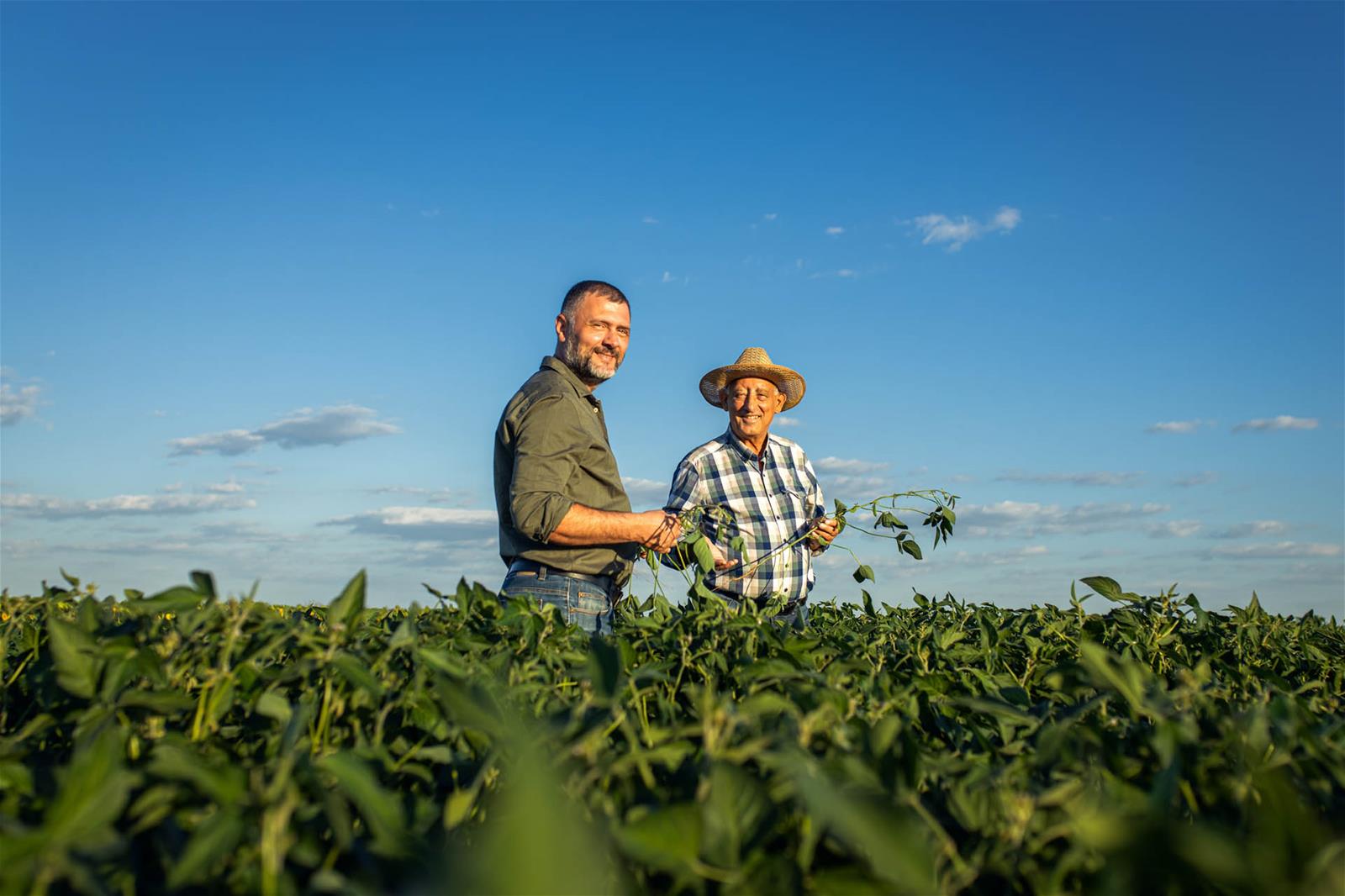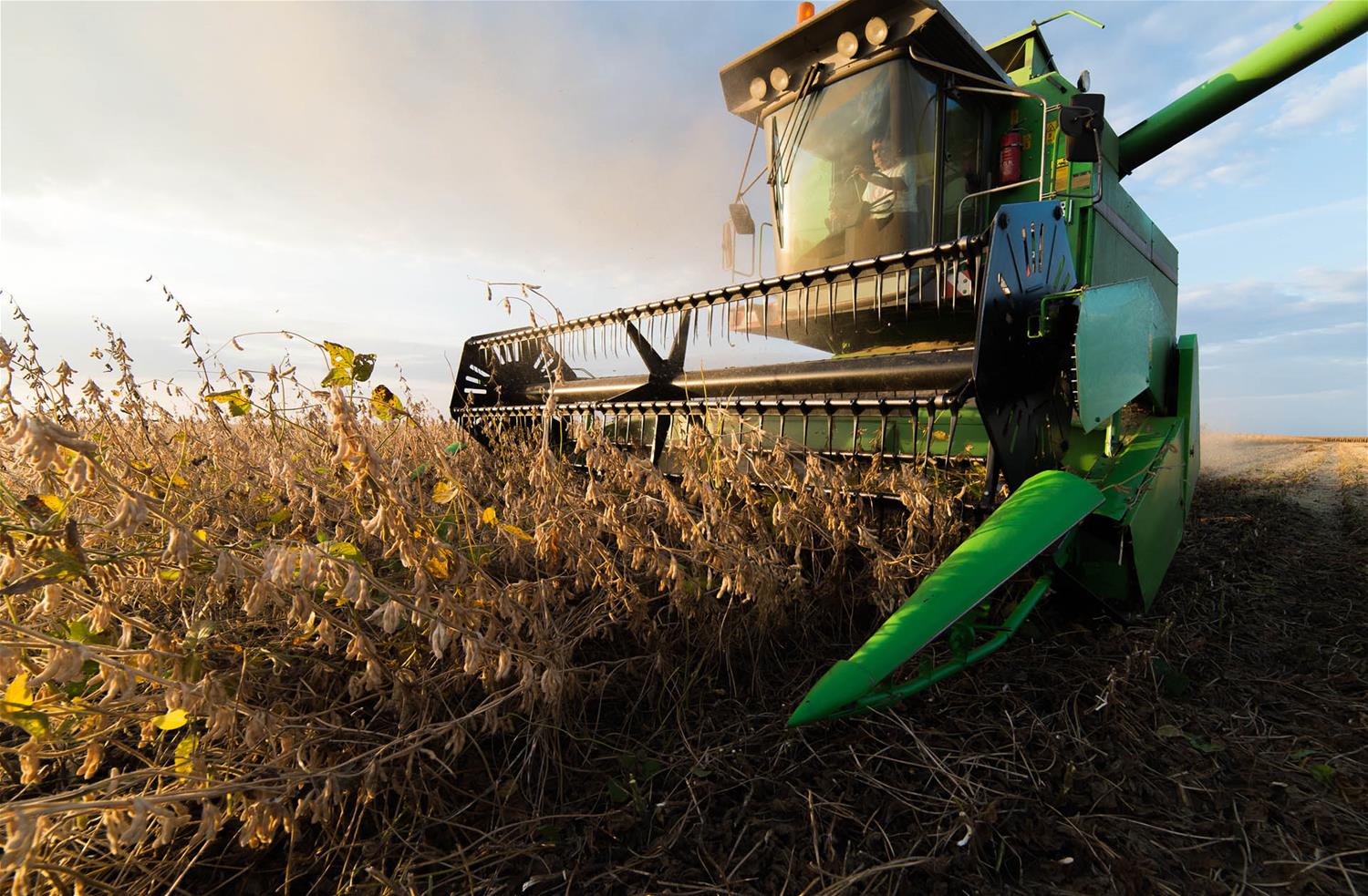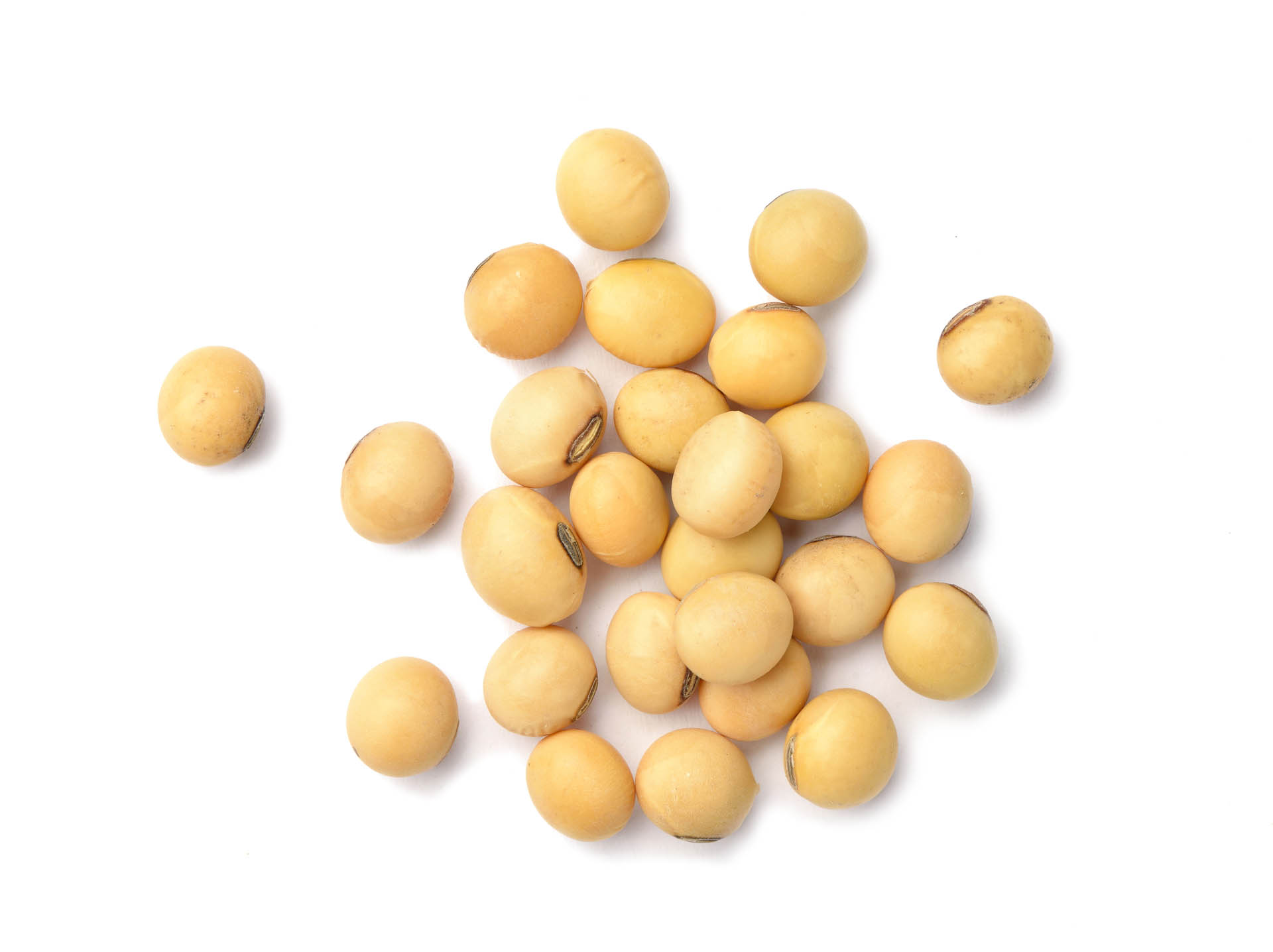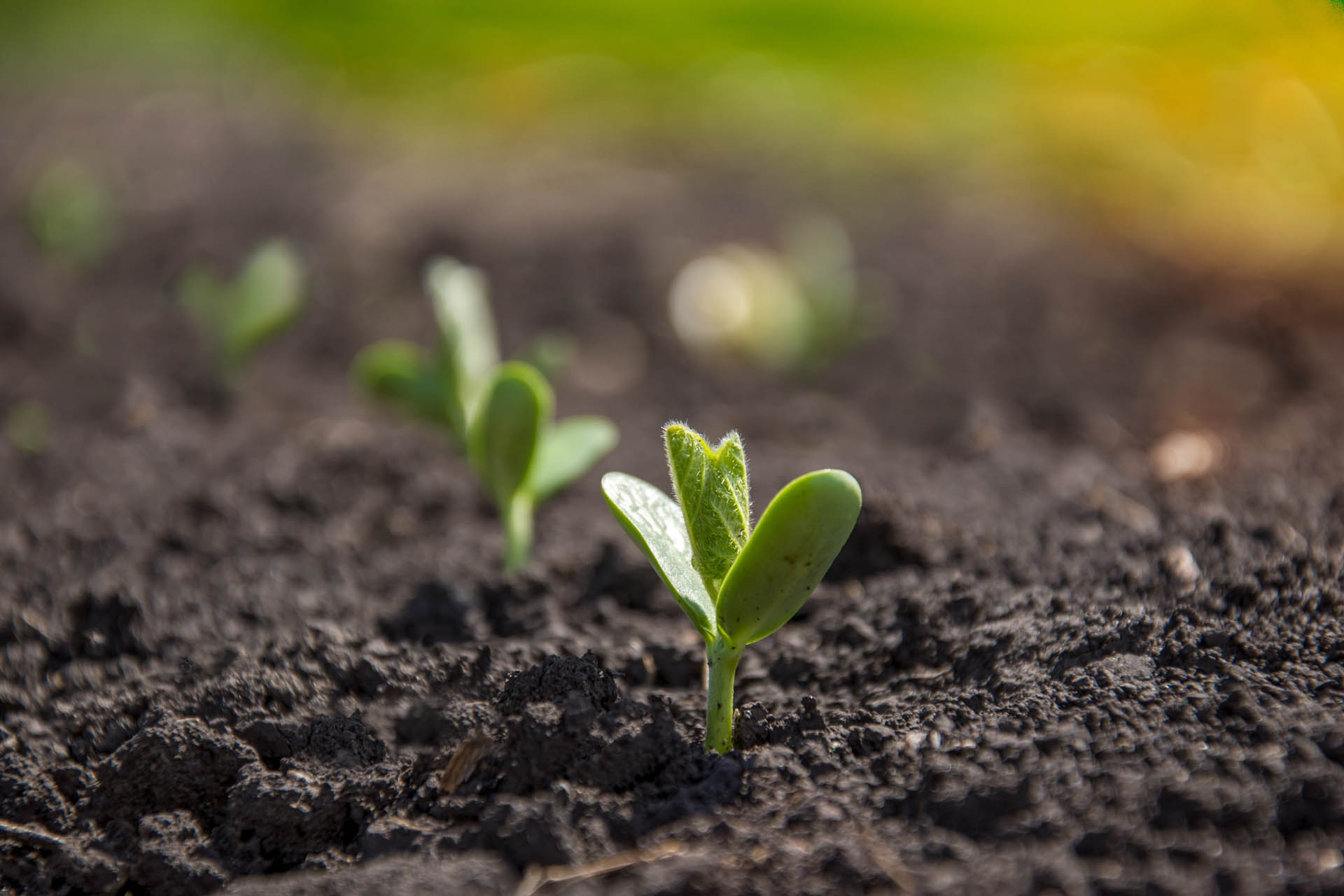Soy Production
in the U.S.
U.S. soybean farmers are committed to providing safe, high quality and sustainable ingredients—thereby creating a dependable supply of food for our communities.
U.S. Soybean Production Basics
Soybeans are one of the most versatile plants in the U.S. They’re used in recipes and household goods alike. Soybean fields are also resilient to changing soil conditions. Harvesting soybeans involves growing genetically modified and non-genetically modified beans using both conventional and organic farming practices to meet consumer demand.

Innovative U.S. Soybean Production
U.S. farmers are highly innovative and use technology to create more sustainable and functional soybean crops. They’re constantly planting new types of soy to yield nutritional and more functional harvests while embracing sustainable production practices that protect the land into the future.
Farmers pursue innovation in soybean production by using regenerative agriculture and biotechnology farming—farming with scientific tools and discoveries. To support these aims, the United Soybean Board works with farmers to establish best practices that allow soy farmers to be more efficient with their inputs and work toward producing a better bean.
Innovative U.S. Soybean Production
U.S. farmers are highly innovative and use technology to create more sustainable and functional soybean crops. They’re constantly planting new types of soy to yield nutritional and more functional harvests while embracing sustainable production practices that protect the land into the future.
Farmers pursue innovation in soybean production by using regenerative agriculture and biotechnology farming—farming with scientific tools and discoveries. To support these aims, the United Soybean Board works with farmers to establish best practices that allow soy farmers to be more efficient with their inputs and work toward producing a better bean.
Producing Soybean with Agriculture Technology and Biotechnology
Different types of agriculture technology (AgTech), particularly biotechnology, are bringing farming into the modern age. Bioengineering has multiple benefits for soybean farmers, including reducing herbicide usage, preventing weeds and insects, increasing harvest size and profit, and helping the environment.
Farmers are also turning to sustainable techniques, like precision farming, to grow their soy crops. Precision farming increases efficiency by helping farmers identify exactly what their soybean crops need and when they need it. Technologies like GPS and satellite mapping also help farmers use their land more effectively. These innovative practices help yield a nutritional product, protect against harsh weather, and address hunger around the world

How is Soy Harvested?
Soybean fields are harvested using a combine, or a large machine used to harvest grains. The combine’s header harvests soybeans by cutting and collecting the soybean plants, removing their stems and pods, and moving the harvested soybeans into its tank. Once the combine’s tank is full, farmers empty the harvested beans into a grain truck or wagon and take them to a grain dealer or storage facility.

Uses of Soybeans
Once harvested, soybeans have a range of uses. Most farmers grow beans that are sold as animal feed or processed into soybean oil. Soybean oil can be used as cooking oil, sold in stores as “vegetable oil,” or used by the food industry in products and on menus. Soybean oil also has industrial applications such as rubber, lubricants, and adhesives. Others grow high-quality beans that are made into soyfoods like tofu.
No matter the soybean use, for U.S. soybean farmers, growing soybeans is more than a job—it’s their life, legacy, and passion. You can sense their dedication every time you bite into a delicious soy dish.
Uses of Soybeans
Once harvested, soybeans have a range of uses. Most farmers grow beans that are sold as animal feed or processed into soybean oil. Soybean oil can be used as cooking oil, sold in stores as “vegetable oil,” or used by the food industry in products and on menus. Soybean oil also has industrial applications such as rubber, lubricants, and adhesives. Others grow high-quality beans that are made into soyfoods like tofu.
No matter the soybean use, for U.S. soybean farmers, growing soybeans is more than a job—it’s their life, legacy, and passion. You can sense their dedication every time you bite into a delicious soy dish.
